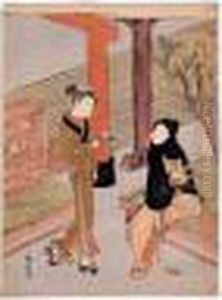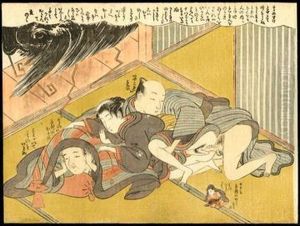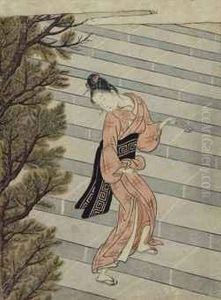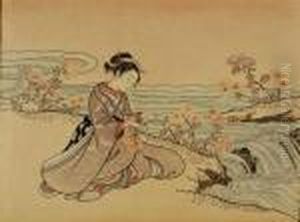





Danse Du Lion Du Theatre Kabuki
-
About Reproduction
Discover the allure of art with our faithful reproduction of "Danse Du Lion Du Theatre Kabuki", originally brought to life by the talented Suzuki Harunobu. Unlike posters or prints, our hand-painted oil painting breathes an unique sense of depth and texture into your space. Every detail, every stroke, and every texture is meticulously recreated, paying the perfect homage to Suzuki Harunobu and his artistic vision.
Owning this piece is more than just decoration - it's a statement of your refined taste in art. Let the vibrant colors and intricate details of this replica serve as a daily reminder of the beauty in our world. Elevate your decor and appreciate the richness of art with our replica of this masterpiece.
-
Painting Description
"Danse Du Lion Du Theatre Kabuki" by Suzuki Harunobu is a significant work of art that exemplifies the rich cultural heritage and artistic innovation of the Edo period in Japan. Suzuki Harunobu (c. 1725 – 15 July 1770) was a pioneering Japanese ukiyo-e artist known for his contributions to the development of full-color printmaking. His works are celebrated for their delicate, lyrical style and were instrumental in the evolution of the nishiki-e technique, which brought multi-colored printing to Japanese woodblock prints.
The piece "Danse Du Lion Du Theatre Kabuki" translates to "Lion Dance of the Kabuki Theatre" in English, capturing a vibrant aspect of traditional Japanese performance art. Kabuki theatre, characterized by its elaborate costumes, dramatic makeup, and stylized performances, has been a significant form of entertainment in Japan since the early 17th century. The lion dance, or "Shishi-mai," is a traditional dance in Japanese culture, often performed in religious and festive contexts to bring good luck and drive away evil spirits. In the context of Kabuki, it incorporates the theatrical elements of the genre, showcasing the performers' skills in embodying the spirit and movements of the lion through dance.
Harunobu's depiction of the "Danse Du Lion Du Theatre Kabuki" is notable for its artistic and cultural significance. It not only captures the dynamic and expressive nature of Kabuki theatre but also reflects the broader artistic movements of the Edo period. Harunobu's work is characterized by a refined use of color and composition, which brought a new level of depth and vibrancy to ukiyo-e prints. His ability to convey movement and emotion, as seen in this piece, contributed to his reputation as one of the masters of the genre.
As an artist, Harunobu was at the forefront of exploring and utilizing the full potential of color printing technology. His works, including "Danse Du Lion Du Theatre Kabuki," played a crucial role in the development of ukiyo-e as a major form of Japanese art. They not only provide insight into the cultural and artistic practices of the Edo period but also continue to influence artists and captivate audiences around the world.
In summary, "Danse Du Lion Du Theatre Kabuki" by Suzuki Harunobu is a masterpiece that embodies the essence of Edo period art and culture. Through its depiction of the Kabuki theatre's lion dance, it offers a window into the historical and artistic traditions of Japan, showcasing Harunobu's innovative approach to color and composition in ukiyo-e printmaking.
-
Lead Time & Shipping
When you order this oil painting replica, it typically takes 2-3 weeks to paint. If the artwork is more complex, it might need a little more time to ensure the best quality. Once it's ready, we'll send you a photo for your approval. After you give the green light, we'll ship it to you for free.
-
Return & Refund
We believe in the quality of our hand-painted oil painting reproductions, and your satisfaction is our priority. If for any reason, you are not completely satisfied with your purchase, we offer a 45-day return policy. You can return your artwork within 45 days of receipt and receive a full refund. Please note that the artwork must be returned in the original packaging and in the same condition as it was received.




















